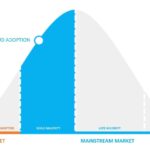I often am asked, “What exactly does it look like to be a cloud accounting department?” So in this blog, let’s talk about it.
What exactly does it look like to be a cloud-accounting department?
Your accounting department uses web-based software, a.k.a. you utilize cloud accounting software
The first sign that you’re a cloud accounting department is that your accounting software is cloud-based.
You access your accounting software online by logging in to a web browser with your secure username and password.
There are many benefits to this. A few of the many include:
- If you are traveling, you can log in from anywhere that has secure internet access. Other users in your company can also log in to the accounting software app.
- No more having to wait for that one accounting person to get back from lunch and ask them a question and wait for them look it up. You can just log in and look it up yourself.
- If a computer dies, you just jump on another computer and log back in, with no major loss. Yep, that’s right, you don’t need to worry about doing backups. Your data is backed up for you automatically by the online accounting software provider.
Cloud accounting = you’ve gone mobile
When your accounting department transitioned to web-based software, then it also went mobile.
Most online apps also have a mobile app designed for your iPhone or Android device so you can do work from your handheld device when you’re on the move. From your phone, you can:
- Access documents
- Capture a customer’s acceptance signature on a proposal
- Accept payments from customers by swiping their card on your phone
- Make payments to vendors
- Reimburse employees
- Process payroll
There’s actually a lot you can do from a handheld mobile device, and that frees you from having to be chained to your desk to get access to your financial information. Furthermore, this enables your accounting department to work from wherever and whenever.
Your accounting department has gone paperless
Another sign that you’re a cloud accounting department is that your accounting department has gone paperless and stores documents in the cloud
At Redmond, we’ve been paperless for years.
Why?
Save time and money
Think about the cost of paper, printers, printer cartridges, copiers, toner, maintenance costs to service or repair the printer – and even the time it takes to order and stock all those supplies. Furthermore, consider the cost associated with the labor involved in the handling of paper. From printing a document to filing a document to receiving a document, that all adds up.
It is estimated that an organization spends, on average:
- $20 to file each paper document
- $120 searching for each misfiled document
- $220 to recreate a lost document
Don’t let this happen to you!
Disaster Recovery
The truth is paper is fragile. It’s subject to damage through fire and flooding. It’s easily stolen or misplaced, and once it’s gone, it’s gone for good.
You could make back-ups of all your paper files, but imagine the cost and labor involved in that! It is much easier to back up digital files.
Collaboration with Remote Co-Workers
Improved collaboration is another very important benefit of a paperless work environment. Electronic documents can be viewed and edited by multiple people at the same time. Access to important sensitive documents can be controlled granularly to view, comment, edit, or own the document by inviting the proper collaborators with the proper permission level.
Security
This is crucial to understand: physical paper is LESS secure than electronic documents. Document Management Systems (like Google Drive, Box, Dropbox, SmartVault, and others) can control access at the single document level. With paper you have no idea who has seen it or moved it and access is often controlled at the file cabinet or file room level.
Furthermore, in the case of money, paper checks and paper bills are more vulnerable to fraud. Online bill-pay controls provide better security against theft.
Attracting Talent
Another great benefit of going paperless is that you can work from anywhere, and therefore you can attract talent from anywhere. Go ahead and recruit staff that you normally couldn’t hire based on your location. And know that young, tech-savvy staff expect to work in a modern paperless environment and are comfortable with a paperless workflow. Zapier has an interesting article here all about working remotely as an accountant.
Save Space
Let’s just talk about that file room again and the copy room. 50-70% of a typical office is dedicated to filing and storage of paper. Filing cabinets, long-term file boxes, copiers, printers, and the supplies that go with them take up so much space!
Environmental
Did you know that:
- Paper consumption has tripled since 1960
- Americans use about 31 million tons of printing and writing paper each year
- The average U.S. office worker prints 10,000 pages per year
When you go paperless, you greatly help the environment.
Not paperless and want to be?
Don’t you want to go paperless? How would you like to remove the clutter of paper in your office?
Just picture it:
- You could reduce your business costs associated with paper, printers, copiers, fax machines, ink and toner cartridges.
- You could eliminate your filing cabinets and use that office space for other things.
- You could receive payments from customers and send payments to vendors and employees electronically – which is faster and more secure anyway.
- You could increase employee productivity by removing the time spent searching for and sending documents. It is much easier to search for a document online.
- You could impress your customers with a professional, modern, mobile solution
- You could save time by getting paper signatures on contracts and forms.
- You could have a secure backup of all documents in the cloud.
- And you could feel good about being an environmentally-friendly business!
Apps can help you go paperless. Some of our favorite apps that will help you go paperless are: QuickBooks Online for bank statement fetching, receipt capture, and digital attachments. BILL for bill payments. Expensify for expense reporting (for reimbursement or company credit cardholders), and Gusto for time tracking & payroll.
Your accounting department integrates with the rest of your business
Finally, another sign that you’re a cloud accounting department is that your accounting department integrates better with the rest of the business.
For example:
- Your sales department can connect to accounting to share customer info
- Your HR department can connect to accounting to share employee info
- Your operations department can connect to accounting to share inventory info
All of these are signs that you have a cloud accounting department.
Need help with getting a cloud accounting department in place? We have two great options for you. If you’re a business owner looking for one-on-one guidance in implementing a cloud accounting department, schedule a call here.
If you’re a business owner or accountant looking to DIY your cloud accounting system, sign up for our course where we walk you through all the ins and outs of how to do so. You can learn more about our course here.








